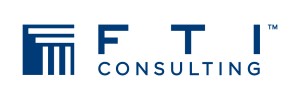12 May, 2016
Financial services professionals are swamped by regulation after regulation in the effort to avoid the next big scandal. But good compliance processes can only take you so far in the highly scrutinized banking sector. A focus on corporate culture is the secret sauce to creating real change. How can you alter a company from the inside out?
Corporate culture is a firm’s DNA. Just as genetics influence who we are, a firm’s culture shapes what an organization looks like, how it behaves and how healthy it is.
Are employees predisposed to behave ethically or do they simply comply with regulations when a manager is looking over their shoulder? Real change cannot be superficial. Financial services firms must build powerful immunity to future-proof against economic shock and preserve reputation.
Here are five insights that will help you turn your organization inside out and get to the root of change as you develop the culture needed to succeed in the post-crash era.
1 Tone Starts at the Top
For employees to take change seriously, they need to hear it and see it from the most senior levels of the organization. Modeling is the key to prompting desired behavior, especially when it comes to high ethical standards. This is crucial for values to permeate to employees on the front lines.
Example: Executives from the C-suite on down must clearly articulate the need for shifting the company’s identity and what this will mean for employees. “Driving cultural change is more likely to be successful if the approach is a commercial one, explained in business terms,” said Stephen Kingsley of FTI Consulting.
2 It Takes Two
Communications is a two-way street. Your listening skills will make a difference in addressing concerns that may arise. Make sure you select a communications framework that facilitates information flow across levels. Millennials are a great source of intel, especially where there’s a disconnect between values and behavior.
Example: Arrange lunches with small groups or go out for coffee to get outside and speak to an employee to learn about any roadblocks. Escape familiar surroundings and find a place where you can build trust and probe about inconsistencies.
3 Money Matters
What is your compensation structure? Think about how that influences your business priorities and the risks you take. In the same vein, incentives must be aligned as you adjust the genetic code of your company. If compliance is a priority, desired behavior should be built into performance scorecards. As an example of an emerging best practice, clawback arrangements allow a firm to reclaim bonuses over the long term based on performance or special circumstances.
Example: Put your money where your mouth is, and make sure culture is represented in employees’ compensation packages. Are they rewarded for taking risks or perhaps for adhering to or exceeding compliance requirements? Infuse messages about obeying the letter and the spirit of regulations and acting in the best interest of customers as direct links to culture and business goals.
4 Consistency is Key
Inconsistent standards can put a firm at risk. According to FTI Consulting’s Jeannette Lichner, “Firms with a global footprint suffer unique challenges in this new, stricter environment because of cultural differences.” Depending on the country, employees might have varying cultural norms. And what’s acceptable in the U.S. may not pass muster in the EU. While the same standards will not be adopted overnight, leaders should think carefully about creating guidelines without disempowering a team across the pond.
Example: If you’re working across countries or even in a matrix structure, consider the differences that drive behavior. Change management becomes more than a buzzword when employees understand expectations and standards.
5 Repetition Counts
Cultural change is not a one-time undertaking. “It requires ongoing reinforcement of key messages and behaviors to transition to an evolved future state,” said Andrew Walton of FTI Consulting. Culture is not a set-it-and-forget-it activity and must be shaped trough regular communication.
Example: Training sessions – both computer-based and face-to-face, frequent manager discussions, and recognition programs are starting places for making sure a firm’s DNA is altered for good.
For further information, please contact:
Jason Liew, Managing Director, FTI Consulting
jason.liew@fticonsulting.com





